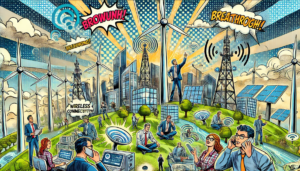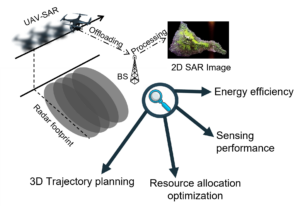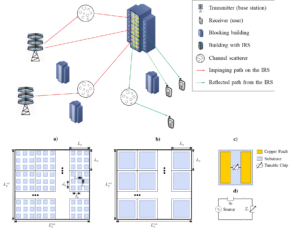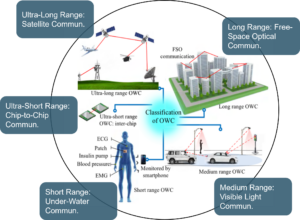Next Generation Wireless Communication

As the demand for wireless connectivity has grown exponentially and is expected to continue this trend, it is evident that significant improvements in communication technologies are required to meet the demands of future connectivity. We support and participate in the shaping of the future of wireless communication!
UAV-Based Communication and Sensing

UAV-based communication and sensing uses unmanned aerial vehicles (UAVs) to provide flexible and efficient wireless communication networks, particularly in remote or disaster areas. These UAVs can act as mobile base stations or relay nodes, increasing signal coverage and capacity while collecting real-time environmental data through advanced sensing technologies. This approach offers significant advantages in applications such as search and rescue, agricultural monitoring and military surveillance, where rapid deployment and adaptability are critical.
THz Communication

THz communication refers to the use of terahertz frequencies (0.1-10 THz) for ultra-high-speed wireless data transmission, offering bandwidths far beyond current microwave and millimetre-wave technologies. It has the potential to revolutionize sectors such as upcoming 6G networks, enabling unprecedented data rates, low latency, and improved device connectivity. However, challenges such as signal attenuation, hardware development, and efficient modulation techniques must be overcome to realize the full potential of THz communications in practical applications.
Intelligent Reflecting Surfaces

Intelligent Reflecting Surfaces (IRS) are reconfigurable surfaces embedded with programmable elements that can dynamically control how electromagnetic waves are reflected to improve signal strength and coverage in wireless communications. By adjusting the phase and direction of incoming signals, IRS can significantly improve energy and spectral efficiency in future networks such as 6G, enabling better connectivity in challenging environments such as urban areas. This technology offers one solution for increasing communications performance without the need for additional transmitters or base stations, making it a promising tool for smart and green wireless networks.
Optical Wireless Communication

Optical Wireless Communication (OWC) uses visible, infrared or ultraviolet light to transmit data through free space, providing an alternative to traditional radio frequency-based wireless systems. It offers advantages such as high data rates, enhanced security, and immunity to electromagnetic interference, making it suitable for applications such as LiFi, underwater communications, and inter-satellite links. However, OWC faces challenges such as sensitivity to environmental factors (e.g., weather, obstacles) and line-of-sight requirements that need to be addressed for wider deployment.